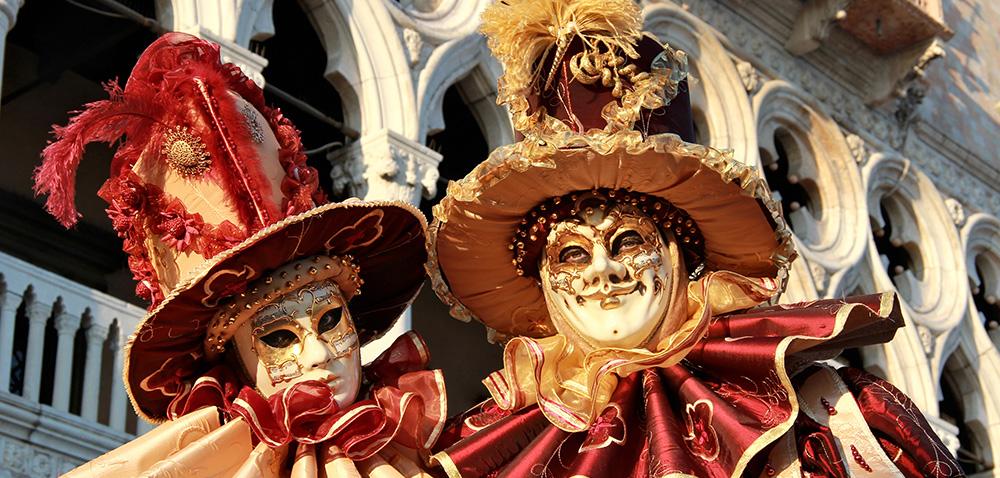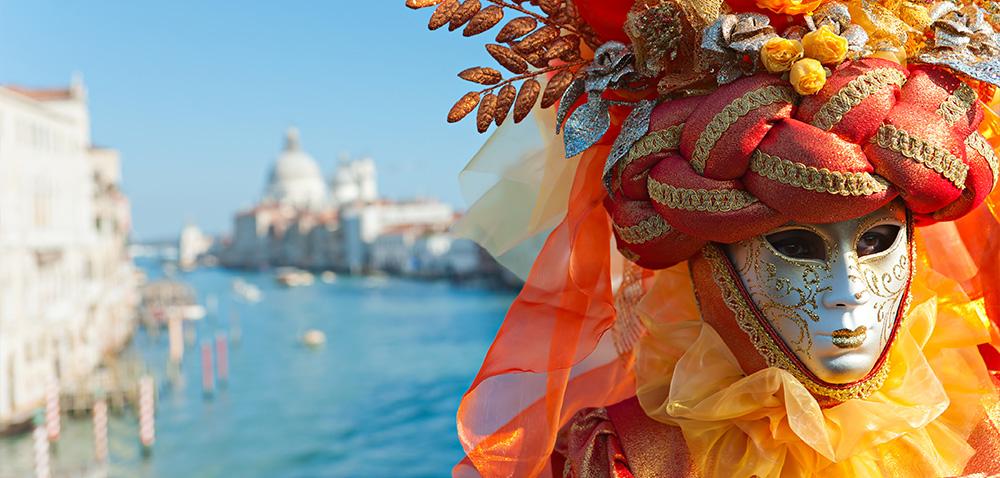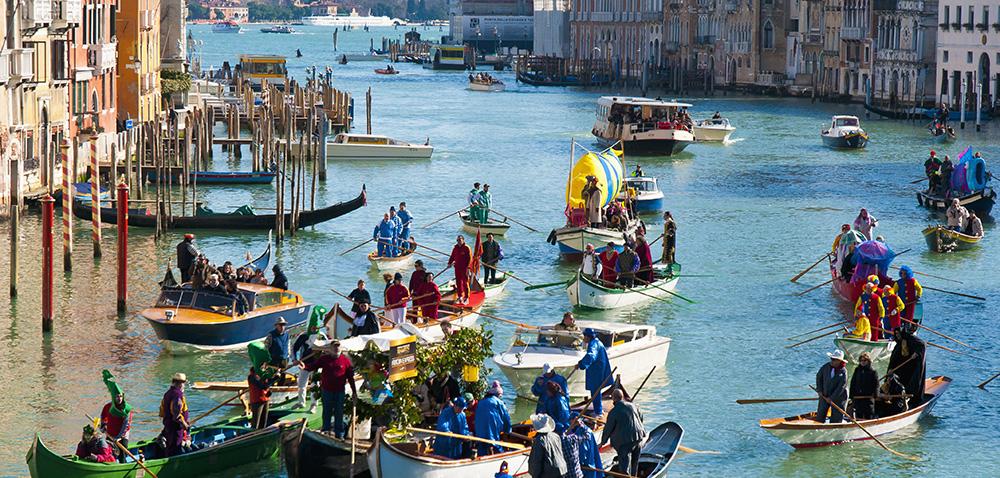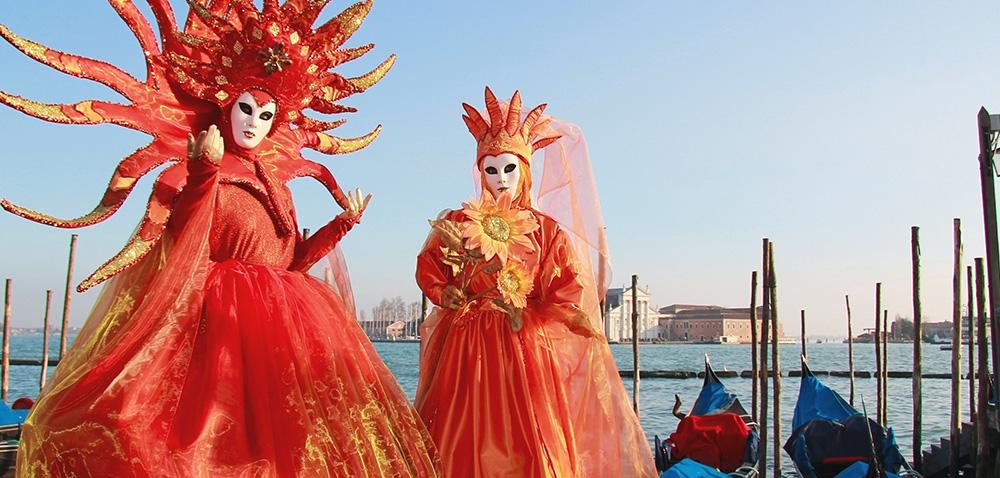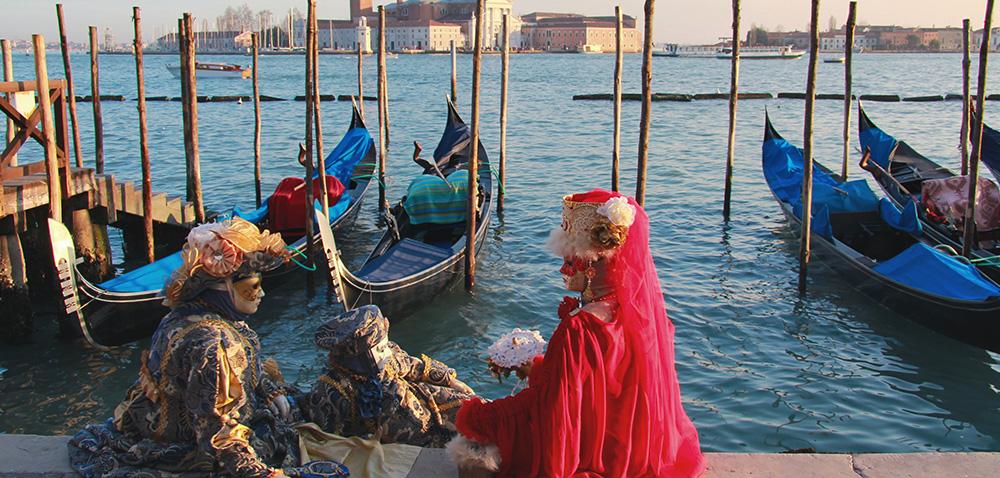The pride of anonymity
The Venice Carnival is one of the most iconic celebrations in the world. Every year thousands of locals and tourists flock to the crowded streets and waterways of the floating city to take part. The festival begins when a character called Colombina, Harlequin’s mistress, descends from St.Mark’s bell-tower on a white silk rope into St.Mark’s Square. In the days that follow, the city is alive with impromptu performances, spellbinding music and dazzling theatrics.
It’s a festival full of pride and joy, so it can seem strange to outsiders why so many people choose to wear masks to protect their identity. Nowadays of course, the masks are mostly for show, but when the festival began, people had a very good reason for wearing them. Venice had always been a prosperous city, but its small size made it difficult to keep secrets. And as you probably know, it can be hard to let yourself go wild at a party if your business associates are watching! So the masks became an essential part of any party costume, worn by people of all social classes, they gave guests the chance to act differently, forget their social standing and focus on having a good time. The masks themselves are each designed to represent a character for The Art of Comedy, a 16th Century form of improvised entertainment where social situations and local stories were recreated and mocked on stage.
With anonymity came a carnival that grew progressively wilder and more decadent every year. Eventually, in a bid to prevent this ‘moral decay’ , the wearing of masks was banned at carnival, and carnival itself was outlawed in 1797. In fact, it was only in 1979 that the carnival of Venice became a regular event once more. Hard to believe considering the pride the residents of the city take in the festival today, with or without a mask.
It’s a festival full of pride and joy, so it can seem strange to outsiders why so many people choose to wear masks to protect their identity. Nowadays of course, the masks are mostly for show, but when the festival began, people had a very good reason for wearing them. Venice had always been a prosperous city, but its small size made it difficult to keep secrets. And as you probably know, it can be hard to let yourself go wild at a party if your business associates are watching! So the masks became an essential part of any party costume, worn by people of all social classes, they gave guests the chance to act differently, forget their social standing and focus on having a good time. The masks themselves are each designed to represent a character for The Art of Comedy, a 16th Century form of improvised entertainment where social situations and local stories were recreated and mocked on stage.
With anonymity came a carnival that grew progressively wilder and more decadent every year. Eventually, in a bid to prevent this ‘moral decay’ , the wearing of masks was banned at carnival, and carnival itself was outlawed in 1797. In fact, it was only in 1979 that the carnival of Venice became a regular event once more. Hard to believe considering the pride the residents of the city take in the festival today, with or without a mask.

